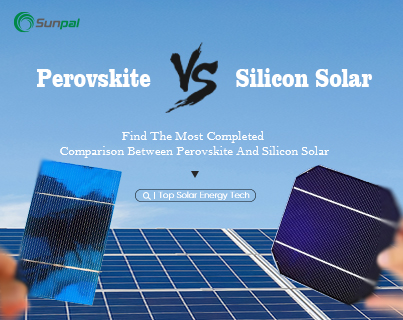
The solar industry has been a hotbed of innovation for years, with manufacturers and suppliers perpetually seeking ways to enhance the efficiency and cost-effectiveness of their solar modules. The objective is to harness the sun's energy more effectively, providing cleaner and more affordable power to consumers worldwide. Among the many technologies under development, perovskite-silicon tandem solar cells and traditional silicon solar panels have emerged as notable contenders. This extensive blog post aims to provide a comprehensive comparative analysis of these two technologies, examining their pros, cons, and current development situations.
Perovskite-silicon tandem solar cells have recently made headlines for their high efficiency and potential for cost reduction. They are a novel technology that integrates two power-generating layers: a layer of perovskite, a synthetic material that can absorb light and convert it into electricity, and a layer of silicon, which has been the mainstay in solar panels for decades.
One formidable advantage of these tandem cells is their potential to exceed the efficiency limits of traditional silicon solar panels. They have the capability to reach efficiencies of over 30%, a significant leap from the average efficiencies of other types of solar cells.
However, no technology is without its challenges. The main issue with perovskite-silicon tandem cells lies in their stability and longevity. The perovskite layer is sensitive to moisture, heat, and UV light, all of which can lead to degradation over time. This instability is a significant hurdle to overcome as solar cells need to be robust enough to withstand varying weather conditions for many years.
On the development front, the opportunities for perovskite-silicon tandem cells are vast. Manufacturers are investing heavily in research and development to improve the stability and longevity of these cells. The path to commercial viability is not without obstacles, however. There is a need for further testing and standardization before these cells can be mass-produced. The technology is still in its infancy, and much research is still needed to ascertain its long-term viability.
Traditional silicon solar panels have been the industry standard for decades. They have earned the trust of both manufacturers and consumers due to their reliability and long lifespan, often lasting for 25 years or more. Their durability and proven track record have made them a go-to choice for solar installations worldwide.
However, these panels are not without their shortcomings. Their efficiency, while reliable, is significantly lower than that of perovskite-silicon tandem cells, typically reaching about 20%. This lower efficiency means that more panels, and consequently more space, are needed to generate the same amount of power.
Currently, manufacturers are working diligently on reducing the cost of silicon solar panels while also improving their efficiency. Despite the emergence of new technologies like perovskite, silicon solar panels continue to hold a significant share of the market. However, the high energy consumption and environmental impact of silicon production present formidable challenges to its sustainability. Manufacturers and suppliers are looking for ways to mitigate these issues to ensure that silicon solar panels remain a feasible option in the long term.
To provide a clear understanding of how these two technologies stack up against each other, here's a comparative analysis:
|
COMPARISONS |
Perovskite-Silicon Tandem Cells |
Traditional Silicon Solar Panels |
|
Pros |
High efficiency, Potential for cost reduction |
Reliability, Long lifespan |
|
Cons |
Stability issues, Degradation over time |
Lower efficiency, High energy consumption |
|
Current Development |
Heavy investment in R&D, Need for standardization |
Cost reduction efforts, Sustainability challenges |
Conclusion
In conclusion, both perovskite-silicon tandem cells and traditional silicon solar panels have their unique strengths and challenges. While perovskite offers a promising path towards higher efficiency, silicon continues to be a reliable choice for solar modules. The future of solar energy is dynamic and full of promise, with both technologies offering unique opportunities for advancement. As research and development continue to advance, the future of solar energy looks bright. This progress offers opportunities for manufacturers and suppliers to deliver more efficient, cost-effective, and sustainable solutions, making solar power a more accessible and eco-friendly power source for all.